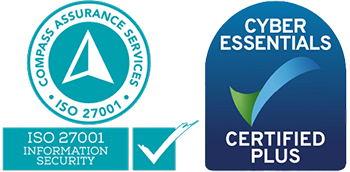Introduction
Risk management is no longer confined to a single department. Compliance, finance, operations, IT, and legal teams all play a crucial role in identifying, analysing, and addressing risks. However, when collaboration breaks down between these functions, the consequences can be severe – financial losses, reputational damage, regulatory penalties, and operational inefficiencies.
Despite its importance, many organisations struggle with effective risk collaboration due to poor communication, siloed data, conflicting priorities, unclear ownership, and a lack of executive support. Addressing these challenges is key to ensuring a proactive, strategic approach to risk management.
The Impact of Poor Communication
Clear communication is the foundation of effective risk management. When teams fail to share insights and concerns, critical risk-related information can be lost, misunderstood, or ignored.
A manufacturing company’s maintenance team might identify that a critical piece of machinery is nearing failure but fail to communicate this to the operations and procurement teams. Without timely action, repairs or replacements may not be scheduled in time, leading to costly downtime and missed production targets.
Similarly, in crisis situations, uncoordinated responses due to poor communication can escalate risks rather than contain them. Aligning teams through structured communication channels ensures that risks are flagged, discussed, and addressed before they become critical issues.
The Risks of Siloed Data & Insights
Effective risk decisions require a shared, organisation-wide understanding of risk exposure. Yet, many businesses still operate in silos, where different departments store and manage risk data independently.
Finance teams may track financial risks, compliance teams focus on regulatory risks, and IT teams monitor cybersecurity threats, each using separate systems. Without an integrated, single view of risk, critical insights can be overlooked, making it difficult to anticipate risks or coordinate a response.
A centralised risk management system ensures leadership has a full picture of potential threats, enabling faster, more informed decision-making and reducing unnecessary spending on redundant risk controls.
Conflicting Priorities: Bridging the Gap Between Departments
Every department has its own objectives, which can sometimes clash with broader risk management efforts. When teams operate in silos, risk management can become secondary to individual performance metrics.
A sales team eager to expand into new markets may prioritise speed over regulatory considerations, while the compliance team may be more cautious about potential risks in new territories. If these teams fail to collaborate effectively, the company could face unforeseen legal or financial consequences.
By fostering cross-functional alignment, businesses can ensure that risk considerations are embedded in decision-making rather than becoming an afterthought.
Looking for a better way to manage risks?

Unclear Ownership: The Accountability Challenge
One of the biggest barriers to effective risk management is the lack of clearly defined ownership. Without a structured framework assigning risk responsibilities, key mitigation actions can fall through the cracks.
A global organisation facing new regulatory requirements might fail to clarify which department is responsible for implementation. If legal, compliance, and operations teams assume someone else is handling it, necessary compliance measures may be delayed, exposing the company to fines and reputational harm.
Establishing clear risk ownership across functions ensures that risks are not only identified but actively managed and mitigated.
The Role of Leadership in Risk Collaboration
Risk management requires strong executive buy-in. Without visible leadership support, risk initiatives can be underfunded, deprioritised, or inconsistently implemented.
When senior leaders champion risk awareness and embed it into decision-making, it signals to teams that risk management is not just a compliance function but a key driver of business resilience and success. Encouraging open dialogue, allocating resources, and ensuring accountability at all levels helps create a risk-conscious organisation.
Creating a Unified Risk Culture
Different teams often have varying risk tolerances. While finance and compliance may take a conservative approach, product development and marketing teams may prioritise innovation and speed. These differences can create friction when aligning risk strategies across the organisation.
To build a cohesive risk culture, businesses must set clear guidelines, encourage open discussions about risk, and establish common risk management principles that all teams adhere to.
Overcoming Barriers to Effective Risk Management
Many employees lack the knowledge to identify and manage risks effectively. Without the right training, risk management efforts can become inconsistent, leading to vulnerabilities that could otherwise be avoided. Regular training ensures that all teams understand their role in risk management and can proactively contribute to mitigation efforts.
Manual risk tracking through spreadsheets or email chains is inefficient and prone to errors. Automating risk management processes streamlines reporting, improves accuracy, and enables real-time monitoring. Organisations that invest in risk management solutions gain better visibility, allowing them to respond to threats faster and more effectively.
Long-standing organisations often resist new risk management frameworks, even when they bring clear benefits. Resistance to change can slow down risk transformation efforts, leaving businesses vulnerable to emerging threats. Change management strategies – including leadership endorsement and phased implementation, help overcome resistance and ensure smoother transitions.
Final Thoughts
Risk management isn’t just about avoiding problems, it’s about creating resilience and ensuring sustainable success. Poor collaboration doesn’t just lead to inefficiencies; it increases financial risks, weakens operational performance, and leaves organisations vulnerable to compliance failures.
By breaking down silos, fostering clear communication, aligning departmental priorities, and ensuring accountability, businesses can transform risk management from a reactive function into a strategic advantage. The most effective risk managers recognise that collaboration is not optional; it is a necessity for organisations to thrive in an increasingly complex risk landscape.
Risk management professionals who take an active role in driving cross-functional engagement position their organisations to anticipate and mitigate threats more effectively. Addressing these challenges today ensures that businesses remain resilient, competitive, and prepared for the future.





